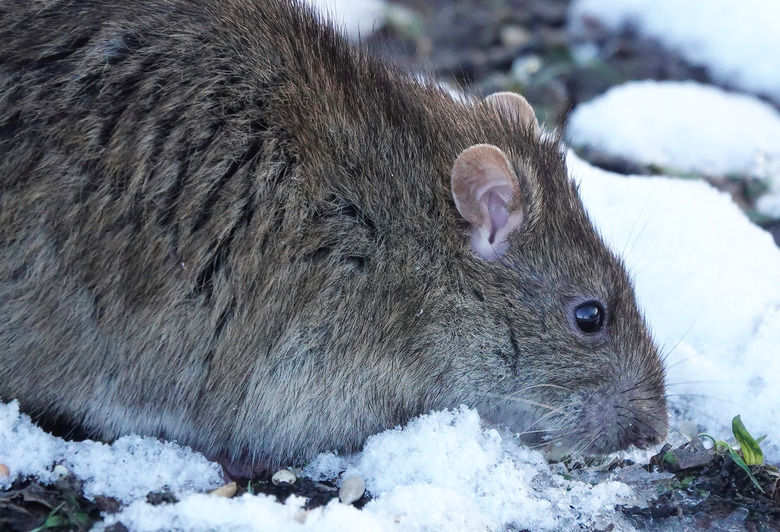Respiratory System Of A Rodent
Rodents such as mice, rats, hamsters, guinea pigs, and rabbits make charming and intelligent pets to keep in a small environment. Like humans, the respiratory system of a rat or other rodent has five parts: the nose, mouth, throat, larynx (voice box), windpipe (trachea), and lungs.
Rodents aren't mouth breathers
Rodents aren't mouth breathers
Rodents are obligate nasal breathers, meaning that they primarily inhale through their nose. They can eat and breathe at the same time, which comes in handy for prey animals like rodents to be able to continue analyzing molecules in the air for the scent of a predator while taking in nutrition.
The epiglottis, a flap-like organ in the rear of the mouth of rodents, shuts off the mouth from the breathing passages. This structure is what makes rats, rabbits, and other rodents obligate nose breathers. If you see your pet gasping for air through his mouth, it's a sure sign that something is seriously wrong. Anything blocking the airflow through the nose can cause serious respiration issues for a pet rodent.
Respiratory system of a rat
Respiratory system of a rat
Once the air passes the epiglottis, it flows past the larynx and down the trachea. Like other rodents, the rat trachea function is to bring air to the lungs, splitting into two branches in the chest cavity. A rat's trachea has 18 to 24 C-shaped ridges made from cartilage that keep the airway from collapsing or getting compressed. Interestingly, when a rat extends her neck when flattening out to pass through a small space, the trachea can lengthen by 50 percent without any decrease to the 1.6 to 1.7 millimeter diameter of the airway.
Rodent lungs are divided into lobes, with each lobe providing the exchange of oxygen and carbon dioxide. This is efficiently performed by alveoli, little individual air sacs in the tissue of the lung. Baby rats are born without alveoli, however, so the air exchange happens in smooth-walled channels of the lungs until the air sacs develop in the first seven to 10 days of life.
Rats don't have mucus membranes to clear away foreign bodies from the airway like other rodents and humans. They have unique serous cells that secrete watery fluid thinner than mucus. The species is also novel among rodents in that it has more serotonin (a hormone associated with feelings of well-being) in the lungs, less histamine (associated with inflammatory and allergic responses), the thinnest pulmonary artery, and thickest pulmonary vein among all rodent species.
Rodents can breathe intestinally
Rodents can breathe intestinally
It's common knowledge that frogs, turtles, and certain other aquatic creatures can breathe through their butt. Butt breathing is used during the low-oxygen-use times of hibernation. Water is drawn into the cloaca, where blood-vessel-rich tissue extracts the oxygen. The remaining liquid is then passed back out of the cloacal opening.
Rodents have a similar ability to absorb oxygen through their intestines, although they don't do so as a matter of everyday life. In recent studies designed to find new ways of providing oxygen to patients in respiratory failure, rodents and pigs were given pure oxygen intestinally. Rodents survived 50 minutes in low-oxygen environments when they were given intestinal oxygen compared with only 11 minutes for those without. They could also walk further in a 10 percent oxygen chamber than their nonventilated peers.
An intricate mesh of tiny blood vessels just below the surface of the rectum allows the exchange of oxygen. Although you won't witness any butt breathing in your rodent cage, it's just one more way that your pet is capable of respiration.
